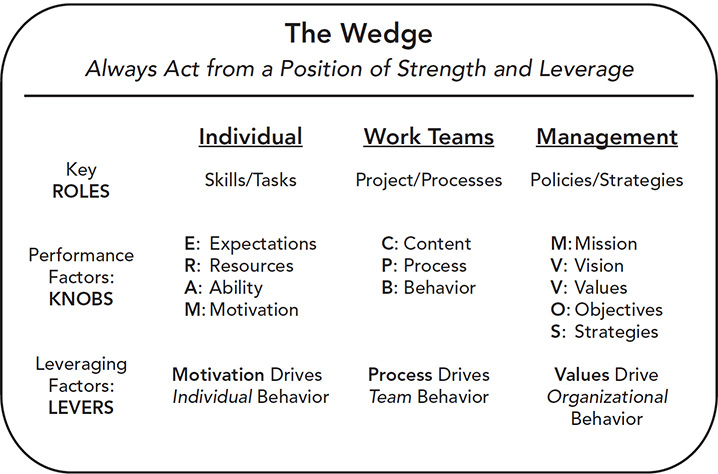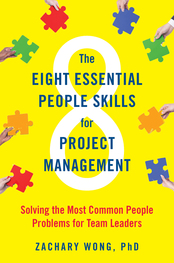
Download PDF Excerpt
Rights Information
The Eight Essential People Skills for Project Management
Solving the Most Common People Problems for Team Leaders
Zachary Wong (Author)
Publication date: 12/11/2018
Wong believes that the best team leaders are problem-solvers and facilitators, so this book provides problem-solving models and tools to diagnose people problems, and facilitative methods, processes, and techniques to correct them. It's an approach that can be personalized to fit any person or situation. Each skill is explained with a well-balanced mix of case stories, examples, strategies, processes, tools, and techniques along with illustrations, graphics, tables, and other visuals to clarify key concepts and their workplace application. To reinforce the most important learnings, Wong includes a “Memory Card” and “Skill Summary” at the end of each chapter.
Nothing is harder than leading people and managing project teams. Being successful takes a combination of knowing human psychology, organizational behaviors, and human factors; having supervisory, process, and communication skills; ensuring good teamwork, high integrity, and strong leadership; and having the ability to integrate and apply these skills to a diverse work team. The Eight Essential People Skills for Project Management is designed for individuals, team leaders, and managers who oversee and coordinate the daily performance of others and who are seeking solutions that they can apply immediately.
Find out more about our Bulk Buyer Program
- 10-49: 20% discount
- 50-99: 35% discount
- 100-999: 38% discount
- 1000-1999: 40% discount
- 2000+ Contact Leslie Davis ( [email protected] )
Wong believes that the best team leaders are problem-solvers and facilitators, so this book provides problem-solving models and tools to diagnose people problems, and facilitative methods, processes, and techniques to correct them. It's an approach that can be personalized to fit any person or situation. Each skill is explained with a well-balanced mix of case stories, examples, strategies, processes, tools, and techniques along with illustrations, graphics, tables, and other visuals to clarify key concepts and their workplace application. To reinforce the most important learnings, Wong includes a “Memory Card” and “Skill Summary” at the end of each chapter.
Nothing is harder than leading people and managing project teams. Being successful takes a combination of knowing human psychology, organizational behaviors, and human factors; having supervisory, process, and communication skills; ensuring good teamwork, high integrity, and strong leadership; and having the ability to integrate and apply these skills to a diverse work team. The Eight Essential People Skills for Project Management is designed for individuals, team leaders, and managers who oversee and coordinate the daily performance of others and who are seeking solutions that they can apply immediately.
Zachary Wong is a Professor and Honored Instructor of human factors, leadership, teams, international marketing and business management at the U. C. Berkeley Extension and Adjunct Professor at U.C. at Davis. He has over thirty years of managerial experience at Chevron Corporation in Research and Technology, Strategic Planning, Business Analysis, Mergers & Acquisitions and Risk Assessment. He is an active consultant in organizational effectiveness, leadership training and team development. He is the author of Human Factors in Project Management and Personal Effectiveness in Project Management.

SKILL ONE
How to Diagnose and Correct People Problems The Wedge
The New Organizational Wedge Model—No More Pyramids
Diagnosing and solving people problems begin by understanding the basic configuration of today’s organizations. Historically, the classic model for organizational structures has been the pyramid, where a small number of executives resided at the pinnacle, senior managers sat just below that, a slew of middle managers populated the midsection, and the widest, biggest, and lowest tier represented the employee base (Figure 1.1, left-hand side). It was top-down management, and the hierarchy represented the relative distribution of authority, decision-making, knowledge, and pay. The higher you were, the more you had, and the people below served the people above. The bulk of the employees resided in the lower half of the pyramid and had limited power, control, and access to information. Also, moving up the hierarchy in terms of advancement and internal communications was a steep climb. However, over time the assumption that workers are laborers who require close supervision and a “command and control” structure has become more obsolete.
In more recent years, another conceptual model was proposed called the inverted pyramid, which reversed the traditional model and tried to show the change in management behavior and the empowerment of employees to make decisions and changes (Figure 1.1, right-hand side) (1). In this new model, the executives serve and support the bulk of the organization and are responsive to the employee base. In practice, it’s unclear whether organizations have truly adopted this bottom-up, worker-based, reverse hierarchy philosophy. Management and executives of most organizations certainly support their employees and want them to excel in their jobs; but do executives and management really serve the employee base, as the inverted pyramid implies, or do they serve the owners of the enterprise, which are usually shareholders, investors, financial institutions, and other equity stakeholders? Governmental organizations are charged with serving the interests of the taxpayers and their constituents; for nonprofits, it’s their sponsors and supporters. Does your organization operate as a hierarchy pyramid or an inverted pyramid?
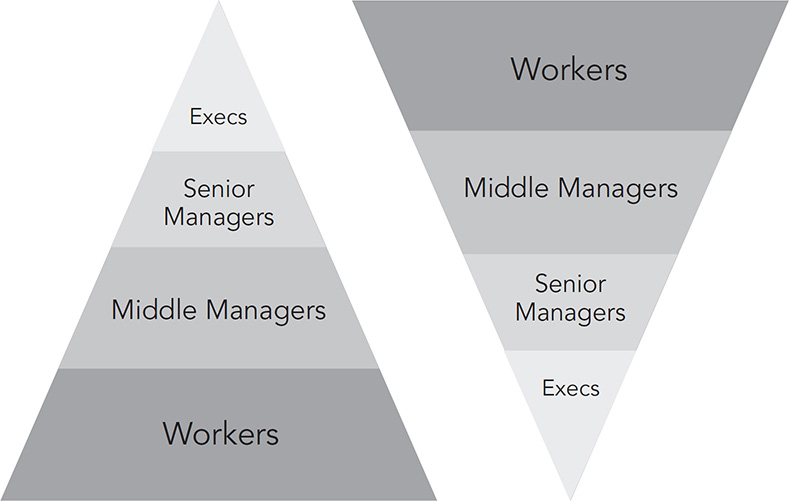
Figure 1.1 Pyramid and inverted pyramid models
The inverted model seems to imply that workers are highly empowered—that the will of the workers prevail—which is certainly not the case. Clearly, organizational policies, rules, and authority are defined by the owners and management of the enterprise. Although management styles have greatly changed over the years, and there’s definitely more employee empowerment and less autocracy, one can argue that in today’s organizations, the operating model is probably somewhere between a pyramid and an inverted pyramid—a horizontal pyramid (Figure 1.2).
Furthermore, due to the characteristics of the new generation of workers and advances in skills, technology, education, and communications, organizations are much flatter, leaner, smarter, and more efficient, and therefore the pyramid should be cut in half horizontally, resulting in a wedge structure (Figure 1.2, dashed line). The old pyramid structures are too big, slow, and bottom-heavy for today’s workplace. The new model needs to be horizontal, streamlined, and efficient.
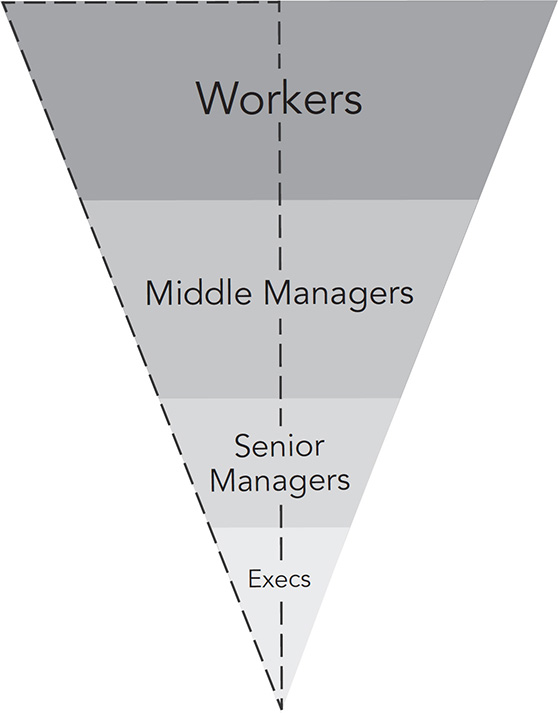
Figure 1.2 Transformation of the pyramid to a wedge
The model also needs to be further updated to reflect the fact that work teams now dominate the landscape. We have shifted away from executives, middle managers, senior managers, and workers to a more team-based platform of management, work teams, and individual contributors. Individual contributor is more apropos in today’s workplace, where employees possess much greater responsibility, power, and value. The label “individual contributor” recognizes that each employee is unique and can have a significant impact on the success of the team and organization. They are not workers but rather unique and valued contributors (Figure 1.3).
In addition, the size of each section depicted in the wedge should correspond not to the number of people at each level but rather to the relative power, scope, authority, and resources bestowed at each level. So the wedge shows management at the top, commanding the greatest authority and influence in an organization, followed by work teams and individual contributors.
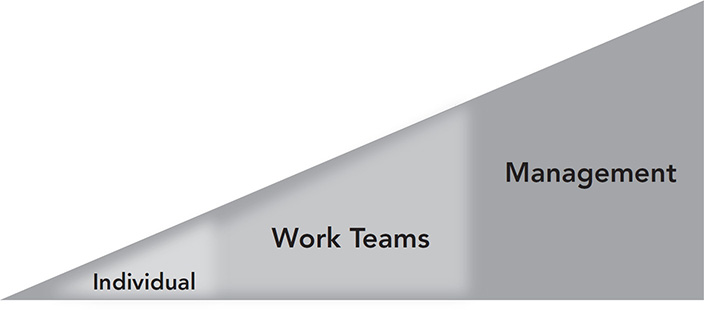
Figure 1.3 The wedge better reflects today’s workplace
In today’s organizations, the boundaries between levels are much less rigid in terms of teamwork, flexibility, and delegation of authority, which means we need to change the solid dividing lines in the pyramid to more seamless divisions in the wedge. More decisions are made in collaboration with teams of people, and the process is much more open and iterative than in the past. The project leader plays a critical role in facilitating, supervising, and leading teams, and they play a highly influential role in today’s workplace. The “team leader” designation is missing from the wedge because team leaders today work fluidly between individual contributors and work teams and between work teams and management, so they operate across all three levels of an organization.
Finally, in these times of tighter budgets, cost reductions, outsourcing, faster cycle times, and less bureaucracy in organizations, the wedge also symbolizes the fact that organizations have established more leveraged resources and processes at all levels. For example, all services and functions that are considered a commodity or provide no competitive advantage (such as, customer service centers, maintenance, training, benefits, and accounting) are readily centralized, shared, or outsourced as a means of leveraging resources.
In short, due to changes in organizational management, personnel, technology, teamwork, communications, and leverage, I believe the wedge is a more accurate representation of how organizations are structured and operate today. Skill One will take a deeper look at the wedge model and how it can help you as a project team leader.
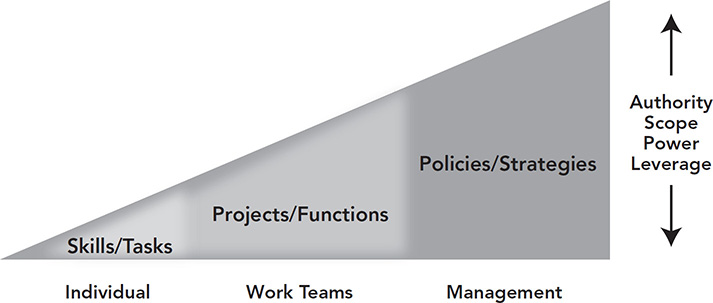
Figure 1.4 Relative roles, authority, scope, power, and leverage in the wedge
Roles and Responsibilities
Each level of the wedge plays a different role that carries a different level of power, scope, authority, leverage, and responsibility (Figure 1.4). I will discuss the significance of these attributes in more depth in Skill Two.
 Individual contributor: Skill and task oriented. Each employee brings unique talents, skills, experiences, and diversity to his or her work. Most employees have a relatively narrow scope, restricted authority, leverage, and limited power with responsibility for various work tasks, skills, and processes.
Individual contributor: Skill and task oriented. Each employee brings unique talents, skills, experiences, and diversity to his or her work. Most employees have a relatively narrow scope, restricted authority, leverage, and limited power with responsibility for various work tasks, skills, and processes.
 Work team: Project and process oriented. This level typically has many different types of project and functional teams, which are led by team leaders, department managers, supervisors, superintendents, and coordinators. Compared to individual contributors, teams have more power, scope, leverage, and authority to make changes, decisions, and innovations.
Work team: Project and process oriented. This level typically has many different types of project and functional teams, which are led by team leaders, department managers, supervisors, superintendents, and coordinators. Compared to individual contributors, teams have more power, scope, leverage, and authority to make changes, decisions, and innovations.
 Management team: Policy and strategy oriented. The highest part of the wedge represents corporate departments and executives whose role is to lead and manage the organization. Management teams have the broadest scope, power, authority, leverage, and responsibilities for organization-wide planning, strategies, resource allocation, monitoring, control, and policies.
Management team: Policy and strategy oriented. The highest part of the wedge represents corporate departments and executives whose role is to lead and manage the organization. Management teams have the broadest scope, power, authority, leverage, and responsibilities for organization-wide planning, strategies, resource allocation, monitoring, control, and policies.
Leveraging the Power and Resources of Individuals, Teams, and Management
The wedge is a multifunctional model that serves as a leadership, performance, and diagnostic tool for solving people problems.
Use the Wedge to Better Understand Your Leadership Role
How does the wedge help you to understand your role as an organizational leader? From a leadership perspective, you have two key roles: creating organizational alignment and leveraging resources.
Organizational Alignment All team leaders are expected to lead, perform, and solve problems with excellence. You must be able to see the bigger picture and lead your team in working to meet organizational objectives and strategies. Linking organizational policies and strategies to team projects and processes, as well as individual skills and tasks, is a huge expectation for team leaders. As the wedge depicts, aligning your team’s work upward to the management level and downward to individual contributors helps you to manage your resources effectively, achieve the right timing and priorities, apply the right strategies and focus for your team, and produce the most value for the organization. This is the essence of leading teams and projects. Organizational alignment is further discussed here and in Skill Two.
Leveraging Resources When it comes to leadership, leveraging and maximizing resources are critical to achieving organizational efficiency, profitability, growth, and sustainability. As a project leader, you are probably spread thin in terms of time, people, budget, and other resources. You have to strive continuously to do more with less but at the same time invest in long-term growth and development. The wedge symbolizes power and leverage, which increase as you go from individual to management level. Leverage means using a modest amount of time, effort, and resources to yield a much bigger and sustainable result—producing a multiplier effect, the biggest bang for your buck. In other words, you lead by leveraging individual and team resources to meet management-level expectations.
You are responsible for managing, aligning, and leveraging your team’s resources. All your team’s resources, including people’s time, skills, knowledge, experience, ideas, and best practices, have limited value unless they are leveraged across the enterprise. The relative size of each level of the wedge reflects the proportional value of a single contributor (individual), many individuals working together on project and functional teams (work teams), and many teams working in alignment with the mission, strategies, policies, and goals of the organization (management).
What’s the potential increase in productivity and efficiency of a team and organization over a group of individuals? One can surmise that sharing one person’s skills, knowledge, and experiences with another person (such as in a mentor-mentee relationship or cross-training) could potentially double one’s value by increasing the other party’s knowledge and skills to the team and organization. But if we look at a team of people, where we can optimize and leverage the time, energy, ideas, skills, knowledge, and experiences across many people, the potential increase in productivity and efficiency would be even larger, say tenfold, than for a group of individuals working separately. This would come from not only cross-learning (such as mentoring, sharing information) but also team organization, processes, and coordination (such as communications, accountability, planning, scheduling); creativity (for example, team brainstorms, developing ideas together); decision-making and problem solving (such as more input and options); motivation (such as trust, camaraderie, team recognitions, peer pressure); and team values (consistent behaviors). No doubt a high-performing team has much more capability and value than a group of separate individuals.
Finally, leveraging the skills and experiences of many teams across an entire organization (such as matrix organizations, centers of excellence) can potentially result in a tremendous increase, perhaps a hundredfold or more, in efficiency and value compared to independent teams. This is often done with Management, Technology, Human Resources, Training and Development, Legal, Planning and Control, Procurement, Project Management, Recruitment, Employee Benefits, and many more. The hundredfold increase is also derived from leveraging financial resources, policies, strategies, goals, affiliations, and physical and intellectual assets.
“Leveraging the skills and experiences of many teams across an entire organization . . . can potentially result in a tremendous increase, perhaps a hundredfold or more, in efficiency and value.”
You can save significant time, energy, and money by better utilizing your organization’s centers of expertise, services, and information. Whether it’s a policy question regarding employee time off or you’re looking for best practices in project management, these functions and services exist in a highly leveraged structure to assist you as a team leader. More importantly, it has broad, long-term, organization-wide precedents in policy administration.
Using the Wedge to Manage Performance and People Problems
In addition to helping you understand your organizational leadership role, the wedge is a model for visualizing and managing team performance and people problems.
Project leaders are expected to work seamlessly across all three levels of the wedge. You supervise a team, you’re working one on one with individual employees, and you represent the policies and procedures of management. These responsibilities are implemented via key processes that are distributed in the wedge (Figure 1.5). You aren’t expected to solve everything yourself. In order to manage performance effectively and solve people problems, you need to be aware of and use the best processes found within each level of the wedge. As a project leader, you have the responsibility for knowing and using these processes to support individual and team performance.
The wedge contains all the key human factors that determine employee, team, and management performance. Human factors are the underlying motivators of behavior and performance. Although you could probably think of hundreds of factors that affect performance, there are only a small number of factors that matter the most. These critical determinants, which I call knobs, regulate people’s performance and are revealed later in this section. You want to use these knobs to turn up and fine-tune performancee.
Finally, the wedge is a useful and powerful diagnostic tool for identifying and taking action on individual, team, and management performance problems. To be an effective problem solver, you must be competent in identifying the specific root problem first; otherwise you’ll be wasting your time and effort trying to cure the symptom instead of the disease. More importantly, when trying to correct people’s performance problems, use the level that gives you the best resources, expertise, and processes to solve your problem. When seeking to solve people problems, always act from a position that gives you the greatest strength and leverage. But how do you do that? You use the best leveraging factor at each level of the wedge. I refer to these key leveraging factors as levers and they will be identified later in this chapter.
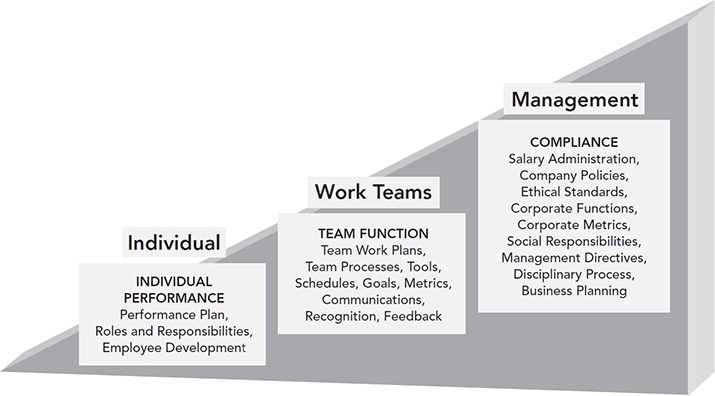
Figure 1.5 Key processes in the wedge
Diagnosing and Correcting People Problems
Using the wedge, the first step in diagnosing and correcting people problems is to determine whether the problem is an individual, team, or management issue. You take it to the right stakeholder and authority. For example, if the performance problem relates to compliance with laws, regulations, or company policies, such as employee discrimination, workplace hostility, employee harassment, fraud, or other such violations, take it promptly to the management level—Human Resources, Legal, Medical, Finance, Health, Environment and Safety, or others. As a policy, legal, or company-wide issue, your focus and action must be at the upper end of the wedge, where they have the subject-matter expertise, experience, precedence, authority, and responsibility to handle the issue effectively. It’s not your responsibility to try to interpret, judge, correct, or resolve the issue, because it has larger ramifications and precedence in terms of legal, policy, public relations, and other management-level concerns. Of course, you will be involved in the process, but at this point it’s not a supervisory-level issue. It’s not a knock on your intelligence or ability; it’s a matter that belongs to management. These types of issues require maximum leverage and attention—wedge it up.
Case in Point An employee on your team complains to you that she has been unable to complete her work assignments because a coworker has been repeatedly “yelling,” making “negative remarks,” and asserting that she “needs to work harder” in processing invoices so that he can approve payments. She feels “intimidated, demotivated, and stressed” to the point that her work output has gone down. She has asked him to stop being so aggressive toward her, but it hasn’t worked. The coworker is a high performer, but his impatience gets the best of him.
Although your employee would like you to use your authority as team leader to correct the coworker’s behavior, your first priority should be to ensure that she is safe and to temporarily restrict the coworker’s contact with her until you and your organization have conducted a prompt review of the situation and allegations, including speaking in greater detail with her, other possible witnesses, and the coworker. But the problem that your employee has raised likely obligates you to report the problem to the management level because it has potential legal and policy ramifications (harassment, hostile work environment). Depending on applicable laws and company policy, once your employee reports such an incident, you may be warranted to seek counsel from Human Resources to ensure compliance with company policies and procedures. The point is that small incidents can have big implications, and certain people problems require prompt reporting to a higher level in the wedge so that you can enlist the most leveraged subject-matter expertise, experience, precedence, authority, and responsibility to assist you on the issue. It may be nothing, but it’s best to take all such claims as real and serious and let management make the call. A more specific step-by-step process for diagnosing and correcting people problems will be covered in the next section.
Take the Problem to the Appropriate Level
If the employee problem pertains to the operation of the project team, such as project deadlines, violation of team ground rules, project implementation issues, team processes, or team conflicts, then the performance issue deserves to be taken to the work team level. Your team members are all stakeholders and have the best knowledge, skills, and experience to address the problem. Because the scope and ramifications of the problem affect the team, your perspective and action on the problem must be considered by the entire work team or representatives of the team.
As teams are in the middle of the wedge, it’s not unusual to find that many team issues, such as inadequate resources, also require involvement from individuals or management. In this case, the problem first needs to be defined and analyzed and alternative solutions explored at the work team level. This could lead to changes in individual assignments or project budgets, which would concern management. The key is to know what skills, processes, authority, and responsibilities exist at each level and then process your problem in the right way, both up and down the wedge.
Finally, if the problem is clearly an individual performance issue, such as absenteeism, low productivity, poor work quality, inadequate work skills, poor communication, or bad behavior, the problem needs action at the individual level. In the next section, I will describe the tools and procedures in the wedge to diagnose and correct people performance problems, and I will reveal the key performance factors (knobs) and best leveraging points (levers) for boosting individual, team, and organizational performance.
Solving Individual Performance Problems
Step 1: Determine the cause of the problem. Getting to the root cause of an employee problem may sound like a daunting task given the endless possibilities, but it isn’t that difficult. Simply apply ERAM to the problem. ERAM is an acronym for expectations, resources, ability, and motivation, and they are the four key performance factors in determining employee behavior and success. Essentially all individual performance problems can be attributed to one or more of these factors—each of these factors is a knob that regulates performance, and ERAM is an effective tool for diagnosing the root cause of individual performance issues.
“ERAM is an effective tool for diagnosing the root cause of individual performance issues.”
Expectations: Are the responsibilities and work assignments clear to the individual? What are the customer or sponsor expectations? Expectations may include the specific work task, content, purpose, priority, output, quality, format, timing, and behaviors. The individual may need more detailed guidance and clarity on work specifications or customer needs. Miscommunications and misunderstandings between employee and supervisor on expectations are common root causes of individual performance problems.
Resources: Is the individual given adequate time, funding, equipment, materials, tools, technology, information, and support to complete the assignment successfully? The most common resource issues are lack of time, funding, and information. Make sure that you understand the employee’s total workload and provide adequate time and support for the work.
Ability: Does the individual have the right expertise, knowledge, skills, and experience to complete the work successfully? Ability includes both hard skills, such as technology, writing, and statistics, and soft skills, such as building positive relationships, leading others, and increasing self-confidence.
Motivation: Is the individual reasonably applying himself or herself to complete the assignment successfully, demonstrating an appropriate level of commitment, effort, energy, and interest? If expectations, resources, and abilities are sufficient, then it comes down to motivation—“I didn’t feel like doing it,” “I didn’t think it was important enough,” or “I felt my effort was good enough.” The motivation issue will be further discussed in this section and also in other chapters.
Step 2: Verify the root cause for low performance by doing your own research. Hopefully Step 1 (ERAM) enabled you to identify the likely cause for the performance problem. But before you try correcting it (unless it’s obvious), be aware that the initial cause can often be inaccurate or incomplete. As a project team leader, trust your employees’ explanations but always seek to verify the root cause of an individual’s performance problem. What may sound like a reasonable excuse could be a cover-up for more serious problems of a personal, team, or organizational nature. Avoid making ERAM conclusions too quickly; make sure you get the whole story before proceeding. Not doing a thorough job in determining the root cause is probably one of the most common mistakes supervisors make in addressing employee problems.
Step 3: After verifying the ERAM root cause, do a gap analysis of the current and desired ERAM for the individual. Whether the problem is due to unclear direction, poor time management, or lack of motivation, it’s important to reach agreement on the desired change, improvement, and result. Looking into the future, if the individual were to meet your expectations, what would his or her behaviors and outputs look like? Obtain a clear, shared agreement on the importance of the task, desired behaviors in performing the task, and specific deliverables. Immediately after the session, have the individual confirm in writing the agreed-on behaviors and results—remember, what gets written gets understood.
Step 4: Have the individual write an action plan to close the gap on the ERAM element needing improvement. Depending on the problem, this may take an additional meeting or two to agree on an action plan and specific expectations going forward. The key is to have the individual draft the action plan to ensure ownership; then you can provide feedback and suggested changes (the action plan can be combined with the written agreement from Step 3). Although some team leaders don’t feel compelled to ask for a written plan, it will behoove you to have documentation—the more, the better. A failure to maintain documentation on employee performance problems is one of the most common mistakes of team leaders. And don’t forget to include clear performance goals and metrics, as well as information on how you will assess the success of the work. Remember, what gets measured gets done. Depending on the seriousness of the performance issue, it may also be wise to state the consequences for both meeting and not meeting expectations.
Step 5: Monitor individual performance and give feedback. Set specific dates to review progress and provide ongoing feedback on the individual’s performance. Don’t wait too long after completion of the action plan to have your first follow-up review to ensure the individual is off to a good start and to send a signal that you are serious and care about the individual’s performance. Feedback should include both things that are going well and things that need further improvement. Remember, no feedback, no improvement.
In all steps of this process, documentation is especially important and may be critical if the individual’s performance requires disciplinary actions.
Which Human Factor Gives You the Greatest Leverage for Individual Performance? Of the four factors or knobs that drive performance (ERAM), motivation offers the greatest leverage for increasing individual performance. In addition to being a key knob or determinant of performance, motivation is also a key lever that you can use to substantially boost individual effort and results. When you instill motivation in people, they demonstrate a “want to” rather than a “have to” attitude. Motivation is an inner drive that raises your level of commitment, effort, ownership, persistence, ambition, initiative, and energy. It’s a human factor that enables you to go above and beyond expectations and achieve goals that you have never achieved before.
Use all levels of the wedge to boost employee motivation by applying individual incentives, as well as using motivation from your work team and management levels. For example, employees who hear from their supervisor that they need improvement would be even more motivated if their fellow team members were also encouraging a change (peer pressure, mentor feedback) and even more so if they heard it from their customers (customer feedback). If individuals are asked to close performance gaps, they will be more motivated if they know their performance is also adversely affecting the team and organization.
The rule of thumb is the greater the gap, the greater the leverage required; also, the greater the gap, the greater the consequences that you would need to seek. For example, if the individual continues to struggle with absenteeism, you may need to “step it up” to a higher action or Human Resources. Higher management has greater leverage, power, and authority to administer stronger disciplinary actions. When seeking to solve people problems, always act from a position of strength and leverage. A more complete how-to discussion on motivating specific individual behavior is provided in Skill Six.
“The rule of thumb is the greater the gap, the greater the leverage required.”
Solving Work Team Performance Problems
The most common work team problems include interpersonal conflicts, missed deadlines, workload inequities, unproductive team meetings, unclear roles and responsibilities, difficult personalities, poor communications, lack of trust, lack of recognition, and low team output. Although humans are social by nature, this doesn’t mean that everyone naturally gets along in a team. Teamwork is an organizational challenge in which you are trying to bring together a group of diverse individuals with different aspirations, work styles, personality types, and egos in order to achieve a common goal. Project leaders have to serve as the team’s supervisor, referee, coach, mentor, and facilitator.
Team performance problems are different from individual employee problems. They involve a lot more people; it doesn’t take much to start a problem; the problems can spread quickly; and you have people who work closely together, which make them susceptible to aggregate toxicity such as conflicts, excessive competition, jealousy, resentment, and other toxic behaviors. As a project leader, you must be on your toes and move swiftly to resolve any toxic problems.
For tackling team problems, the initial process is similar to the approach for individual performance problems—pinpoint the performance problem and then verify that the problem is a work team issue. Once this has been verified, then you can use the following procedure to fix the problem.
Determine the Cause for the Work Team Performance Problem ERAM is the most effective tool for diagnosing and solving individual problems. For work team performance problems, you need to use the CPB tool (2). CPB is an acronym for content, process, and behavior, the three key performance factors or knobs that drive team performance. Essentially all work team performance problems can be attributed to one or more of these elements.
Content: This is the purpose, objective, and goals of the team or project. When people aren’t on the same page, team performance suffers. Team members who are uncommitted, have hidden agendas (ulterior motives), or are unclear on the objectives of the team are destined to fail. Content is the rallying point of the team, and when there is strong team ownership of a common goal, great things happen. Make sure everyone feels mutually accountable and committed to the goals of the team. The key is to ensure that everyone has a stake in the results; otherwise they will treat the project as a “have to” and not a “want to” project and team performance will likely disappoint.
“In the absence of effective team processes, people will do their own thing and behave in a manner that suits them, not the team.”
Process: This refers to the team’s planned procedures, work plan, schedules, methods, and tools. Process operationalizes content, which means team processes convert plans into action. Process is the most overlooked and underestimated factor in team performance. Without good processes, team members do not perform as well and do inconsistent and low-quality work. Process is the foundation of all high-performing teams and is a key driver of team behaviors. Work is more efficient when you have team ground rules, agendas, schedules, performance metrics, feedback, meeting facilitation, and other such team processes in place. In the absence of effective team processes, people will do their own thing and behave in a manner that suits them, not the team.
Behavior: This is defined as the conduct and actions of people—what they do and say. Of the three elements, behavior is the most important determinant of team project success. Team behaviors are the interactions among team members, and they shape the dynamics and chemistry of a team. Some of the most important team behaviors include mutual trust, interdependence, accountability, transparency, valuing individuality, learning, and recognition. People’s behaviors affect the attitude, motivation, and performance of a team.
Anytime you find a team struggling to work together, the problem is almost always related to either content, process, and/or behavior. Once you have identified the problem, you can then proceed to work with the team to clarify the content, improve team processes, or motivate the desired team behavior to get the job done. Your role as project leader is to facilitate improvements in content, process, and behavior. Facilitation is preferred over directing because it helps to ensure that the team retains ownership of any changes.
Which Human Factor Gives You the Greatest Leverage for Team Performance? Of the three factors or knobs that drive team performance (CPB), process offers the greatest strength and leverage for increasing team performance because process drives team behaviors and team behaviors drive success. Process is the key lever that you can use to substantially boost teamwork for three reasons: (1) when you have good team processes (such as work schedules, action plans, tools), you have more clarity, cooperation, and efficiency in planning and executing the work; (2) process depersonalizes the interactions among team members, thereby reducing emotional conflicts and other interpersonal problems; and (3) process facilitates desired behaviors. When it comes to team performance, process is a lever that has triple benefits for you.
Case in Point Team meetings often run long or get bogged down due to ineffective team decision-making. This is frequently caused by the lack of a clear process and method for reaching agreements. By default, most teams implicitly use consensus as their means for decision-making, which often leads to prolonged discussions and indecisiveness. Significant time would be saved if teams would make the effort upfront to clearly define their decision-making method either by: (1) using consensus but defining what it means (consensus usually means “you can live with it”), (2) choosing the most efficient decision-making process for the issue (such as, using “majority rules” for noncritical issues—not everything requires consensus), or (3) establishing a clear decision criterion (for example, “our decision will be based on lowest cost and easiest to do”). A good decision-making process drives good decision-making behavior.
Solving Management Performance Problems
Although everything starts from the top of the wedge, the organization is only as good as the performance of its employees and work teams. You have learned that the key tool for diagnosing and improving individual performance problems is ERAM (expectations, resources, ability, and motivation), of which motivation is the most important lever for raising individual performance. Similarly, the key tool for diagnosing and improving work team performance is CPB (content, process, and behavior), where team behavior is the key performance factor and process represents the best leveraging tool for boosting team results. The highest level of the wedge is management, where the top managers and executives of the organization reside. At this level, organizational behavior and performance problems are centered on two things: leadership and values.
In this context, leadership is defined as the ability to motivate and inspire higher individual, team, and organizational performance. There are innumerable leadership models available in the literature, and it is unlikely that you will find one model that fits all situations. The management model that is proposed here is one that works on the same platform and in alignment with work teams and individuals. To get sustained high performance, management must have the ability to motivate employees to “want to” do their best and inspire team behaviors that create a culture of mutual support and inclusiveness. What would such a leader look like?
 formulates and communicates a clear vision
formulates and communicates a clear vision
 possesses high standards, character, and ethics
possesses high standards, character, and ethics
 defines clear and compelling organizational values
defines clear and compelling organizational values
 inspires excellence and quality performance
inspires excellence and quality performance
 leads with great humility, gratitude, and kindness
leads with great humility, gratitude, and kindness
 treats people with respect and trust, not fear and intimidation
treats people with respect and trust, not fear and intimidation
 sets high goals and strategic direction
sets high goals and strategic direction
 strives to satisfy customers and stakeholders
strives to satisfy customers and stakeholders
 fosters confidence in others
fosters confidence in others
 models desired behaviors—“walks the talk”
models desired behaviors—“walks the talk”
 builds consensus and acts decisively
builds consensus and acts decisively
 facilitates change as a collaborator and motivator
facilitates change as a collaborator and motivator
 encourages teamwork and positive team behaviors
encourages teamwork and positive team behaviors
 demonstrates personal accountability
demonstrates personal accountability
 provides constructive feedback
provides constructive feedback
 believes in continuous improvement and learning
believes in continuous improvement and learning
 empowers individuals and work teams
empowers individuals and work teams
Leadership is the key characteristic for the management level of the wedge, and just as we have diagnostic tools for the individual (ERAM) and team (CPB) levels, we also have a diagnostic tool for improving management-level performance: MVVOS—mission, vision, values, objectives, and strategies. Whether it’s financial performance, competitiveness, market share, sales, or technology, the success of management is predicated on its ability to define, refine, communicate, resource, deploy, and execute the organization’s MVVOS. These five components reflect the direction, trajectory, and growth of the organization. Success is dependent on getting these components right.
“The success of management is predicated on its ability to define . . . and execute the organization’s MVVOS.”
The management level is expected to demonstrate a strong belief in the mission of the organization, inspire a vision for long-term success, establish the right beliefs and behaviors through values, set clear and ambitious objectives, and execute plans and projects through powerful strategies. MVVOS ties the wedge together by providing a platform for managers and project leaders to align, cascade, and synchronize the organization to achieve its highest priorities and goals. In terms of people performance, MVVOS provides the overall priorities and direction of the organization, but the one key element that binds the motivation and behaviors of people is values. Values are the underlying beliefs, principles, and code of conduct for the organization.
At the highest level of the wedge, effective leadership is about more than just establishing clear values—it’s about operationalizing those values that make the greatest difference. Management leadership is about visibly living and breathing the values of the organization, from decision-making, communications, accountability, prioritization, strategies, business plans, and resource allocation to personnel selections, human resources policies, and business codes of conduct. It all hinges on the ability of management to model the values of the organization in a manner that inspires employees along the entire wedge to do more, create more, and exceed expectations.
How MVVOS Can Help You with People Problems From the perspective of a project leader, the value of the MVVOS concept is in understanding that leadership is part of your job responsibility and that you are representing the interests and priorities of management, which are embodied in the organization’s MVVOS. If those things aren’t clear to you, then you owe it to yourself and the organization to give feedback and seek clarification. This knowledge will increase your ability to motivate the right behaviors in yourself and your employees and to resolve people issues for your team. And, as we have learned, motivation and behavior are two critical performance factors for individuals and teams.
As a team leader, your job is to ensure that the MVVOS of the organization gets translated, communicated, and deployed at the team and individual levels. MVVOS’s elements are not just words but rather mandates that require action. Ideally, every project, work plan, goal, and performance plan should be tightly aligned with the MVVOS of your organization. You need to help your team and individual employees establish clear connections between their daily work, teamwork, and the MVVOS of management (Table 1.1). MVVOS represents your strongest authority for enacting individual and team plans, goals, processes, and performance metrics. Achieving alignment creates tremendous power and leverage for you.
“Ideally, every project, work plan, goal, and performance plan should be tightly aligned with the MVVOS of your organization.”
Table 1.1 Achieving Alignment across the Wedge
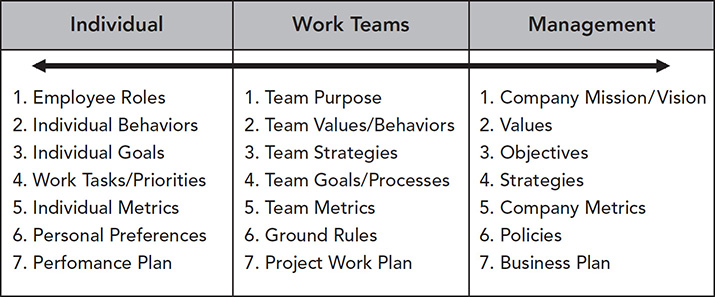
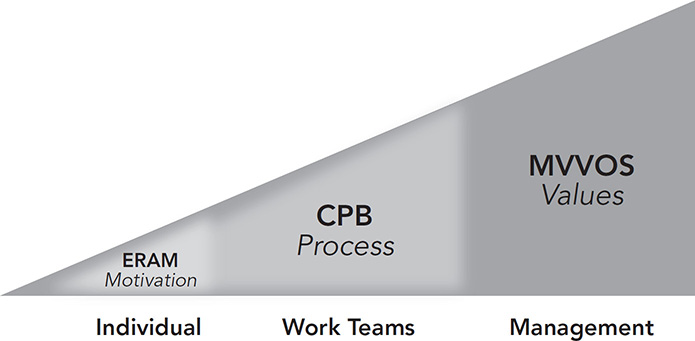
Figure 1.6 Knobs and levers for managing performance
One method for creating an alignment mind-set in employees is to require that each employee identify at least one action that he or she will perform during the year to contribute to the success of each level in the wedge. For example, the employee can volunteer to serve as an emergency responder for the company (management level), identify a new software tool for tracking team action items (team level), and take a leadership course to improve one’s competency (individual level).
Which Human Factor Gives You the Greatest Leverage for Management and Organizational Performance? Whereas motivation is the lever that drives individual behaviors and process leverages team behaviors, of the five performance factors that drive management and organizational performance (MVVOS), values offer the greatest leverage on organizational behaviors and results (Figure 1.6).
Case in Point We can draw from numerous examples of companies that have greatly enhanced their success through their effective leadership and deployment of organizational values, such as Apple (quality products), Nordstrom (customer service), Chevron (health and safety), and Southwest (customer service) (3, 4). But leverage cuts both ways, and companies can experience the opposite effect when either the wrong values are deployed or the right values are poorly implemented or sustained by management, as seen in companies such as Enron (financial fraud), Wells Fargo (false customer accounts), and Volkswagen (emissions fraud) (5). Also, values and organizational behavior require constant vigilance and renewal to stay current with internal and external challenges, such as experienced by Uber (work culture) (6) and BP (Deep-water Horizon oil spill) (5). You can’t have a successful organization without a strong set of values to guide management, team, and individual behaviors.
The project leader’s role in today’s organization is immense, and expectations are high. Managing a project team can be very difficult, emotional, and stressful, but hopefully what you have learned about the wedge and what it contains—knobs (ERAM, CPB, and MVVOS) and levers (motivation, process, and values)—have made you feel more comfortable, confident, and skilled in proactively identifying and solving people problems. At the end of each skill, a memory card and skill summary are provided to give you quick access to the most important learnings of the Eight Essential People Skills for Project Management.
Skill One Summary
Due to advancements in technology, management, business, and workforce capabilities, the organizational structure is no longer a pyramid but rather a wedge. The wedge contains three organizational levels—individual contributors, work teams, and management—and each level has different responsibilities, power, authority, scope, processes, and leverage. The wedge is not only an organizational model but also a model for leading teams, managing performance, and solving people problems. Contained within each level of the wedge is a small number of key performance factors called knobs, which determine and regulate individual, team, and management performance, and specific levers, which can boost individual, team, and organizational success. The secret in solving people problems is to always act from a position of strength and leverage.
Getting to the root cause of an individual employee problem requires ERAM. ERAM is an acronym for expectations, resources, ability, and motivation, the four key performance factors in determining individual behavior and success. Essentially all individual performance problems can be attributed to one or more of these elements—they are the knobs for improving performance, and ERAM is an effective tool for diagnosing the root cause of individual performance problems.
For work team performance issues, you should use the CPB tool. CPB stands for content, process, and behavior, the three key performance factors or knobs for increasing team performance. Essentially all work team performance problems can be attributed to one or more of these elements.
The key performance factors or knobs for management are MVVOS: mission, vision, values, objectives, and strategies. Whether it’s financial performance, competitiveness, market share, sales, or technology, management’s success depends on its leadership and ability to define, refine, communicate, resource, deploy, and execute the organization’s MVVOS.
Of the performance factors at each level, the key levers for boosting individual, team, and organizational performances are motivation, process, and values, respectively. Motivation is about maintaining a positive, productive, and collaborative attitude. Process facilitates team behaviors, and behavior is the key determinant of team success. Last, values are the core beliefs of the organization, and all workplace actions should be based on these values.
The more levels of the wedge that you can apply to the problem, the more likely you are to raise motivation and performance and operate from a position of greatest strength. To achieve sustained success, all levels must work together and be strategically aligned, mutually accountable, and interdependent. What works at the individual level must also work at the team and management levels. The wedge is an effective model and tool to help people leverage their individual power and abilities to solve problems and make a larger contribution to organizational success.
